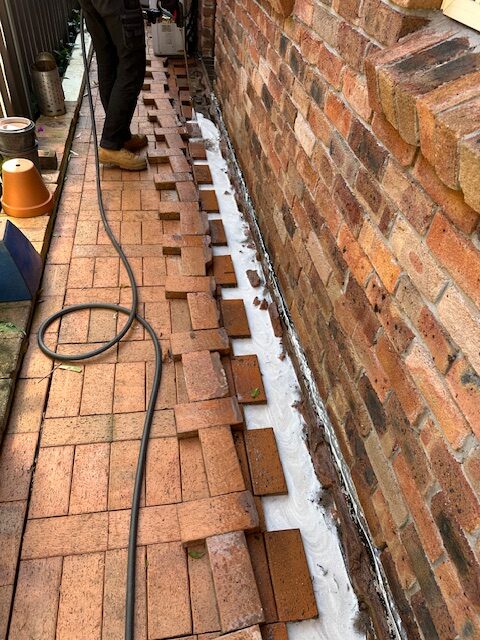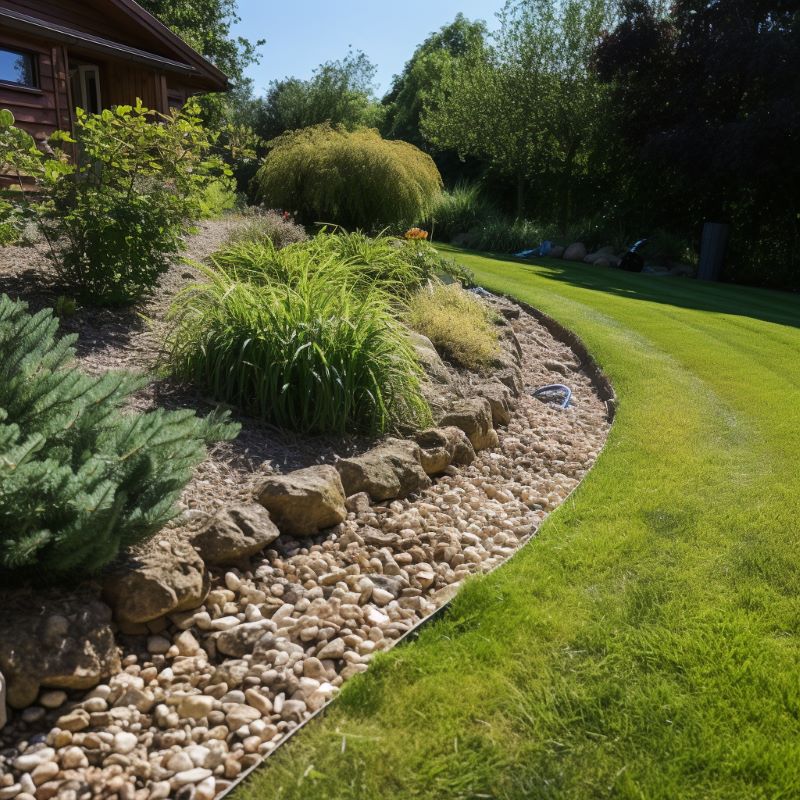Landscaping significantly enhances the beauty and overall market value of your home. However, it is crucial to undertake landscaping projects with careful planning and awareness to avoid unintentionally compromising the integrity of your termite barriers. These protective systems are essential in safeguarding your property against dangerous termite infestations. If not managed correctly, certain landscaping practices can interfere with these barriers, reducing their effectiveness. This extensive guide aims to equip you with vital insights and actionable strategies to ensure that your landscaping efforts not only enhance your property’s appeal but also strengthen your defenses against termites while maintaining the efficacy of your protective measures.
Understand the Critical Role of Termite Barriers in Protecting Your Property
Termite barriers are specialized protective systems, either physical or chemical, installed around or beneath your home to effectively prevent termites from invading your living spaces. Every homeowner should prioritize having a reliable termite management system in place, and understanding the specific type of barrier utilized on your property is critical for effective pest control. A straightforward method to verify this is by checking your electrical meter box, where you can often find essential information regarding your termite protection system. These barriers are particularly crucial in protecting structures, especially in regions like Sydney’s Hills District, where termite activity is alarmingly high, posing substantial risks to homeowners.
- Physical Barriers: These barriers consist of robust materials such as stainless steel mesh or graded stones, strategically placed beneath a building to effectively block termites from tunneling through.
- Chemical Barriers: These barriers involve applying liquid termiticides to the soil surrounding a structure, creating a treated zone that deters or eradicates termites from entering the premises.

Identify Landscaping Practices That Could Compromise Your Termite Barriers
Many common landscaping practices can inadvertently damage or weaken the effectiveness of your termite barriers, thereby exposing your home to the risk of potential infestations. Recognizing these practices empowers you to make informed decisions that protect your property and maintain its structural integrity.
1. Planting Too Close to Your Home’s Foundation
Positioning plants, shrubs, or trees too near your house can lead to several complications that threaten your termite defenses:
- Roots may infiltrate physical barriers or disturb the treated soil in chemical barriers, ultimately undermining their protective capabilities.
- Overgrown vegetation retains excessive moisture around the foundation, which is a significant attractant for termites, thereby increasing the risk of an infestation.
2. Adding Soil or Mulch Near the Foundation
Introducing additional soil or mulch close to your property’s foundation can inadvertently create a bridge over chemical barriers, allowing termites to bypass the protective measures in place. Organic mulch, in particular, can serve as both a food source and habitat for termites, making it a particularly inviting option for these pests.
3. Hardscaping and Paving Projects
The installation of paving stones, patios, or retaining walls near your property can disrupt existing termite barriers. The movement of soil during these construction projects might compromise the chemical seal or create gaps in physical barriers, leading to vulnerabilities that termites could easily exploit.
4. Considerations for Irrigation Systems
Poorly designed irrigation systems or excessive watering can saturate the soil surrounding your home’s foundation. This not only diminishes the effectiveness of any termiticides present in chemical barriers but also fosters a favorable environment for termite colonies to thrive.

Adopt Landscaping Strategies That Safeguard Your Termite Barriers
1. Maintain Sufficient Clearance from Your Home
- It is advisable to keep a distance of at least 50 cm between plants and trees and your home’s foundation, ensuring a robust barrier against termite access.
- Consider selecting smaller, non-invasive plant species that are less likely to develop extensive root systems capable of interfering with your termite barriers.
2. Opt for Termite-Resistant Mulch Alternatives
- Choose inorganic mulches such as gravel or stone, or consider using termite-resistant materials like cedar or cypress to minimize risks associated with termite attraction.
- Limit mulch piles to a maximum height of 5 cm and maintain them at least 15 cm away from the foundation to effectively reduce moisture retention.
3. Avoid Disturbing Barriers During Landscaping Activities
- Before digging or installing landscaping features near your home, consult with a professional to prevent disturbing the integrity of the termite barriers or any termite baiting systems.
- In the event of soil alterations, it is advisable to have the barrier reinspected and potentially retreated to ensure continued protection against termite invasion.
4. Thoughtful Landscape Design Considerations
- Position irrigation systems strategically away from the foundation to prevent excessive moisture accumulation that could compromise the barrier.
- Install root barriers for larger trees to prevent roots from encroaching on the termite barrier and causing potential damage.
- Exercise caution around termite reticulation pipes to avoid damaging them during landscaping activities, which could jeopardize your property’s defenses.
Immediate Actions to Take if Your Termite Barrier Is Compromised
If landscaping activities or natural occurrences have disrupted your termite barrier, prompt action is essential to prevent potential infestations:
- Schedule a Professional Inspection: A thorough termite inspection will help identify any vulnerabilities and confirm whether termites have breached your protective barrier.
- Reinforce Your Barrier: Based on the findings, physical barriers may require repairs, while chemical barriers might need retreatment or a top-up to restore their effectiveness against termites.
- Implement Regular Monitoring: Routine inspections for termite activity are crucial to ensure that your barrier remains intact and your property continues to be protected from infestations.
Landscaping Solutions That Enhance Your Termite Protection
With thoughtful planning and strategic design, your landscaping can effectively complement your termite protection efforts:
- Incorporate gravel paths or decorative stones along the foundation to create a dry zone that deters termites from approaching.
- Utilize raised garden beds with adequate clearance from the house to minimize moisture retention near the foundation.
- Regularly trim vegetation to ensure proper ventilation and reduce moisture buildup, creating an inhospitable environment for termites.

By designing your landscaping with an emphasis on enhancing rather than undermining your termite barriers, you can create a visually appealing and pest-free home environment. Understanding how different yard designs impact termite protection is essential for any homeowner. For expert termite advice or assistance with maintaining your barriers, reach out to our experienced team today. Let us collaborate to secure your home while you create the landscape of your dreams.
The Article: Termite Barriers for Effective Landscaping Solutions first appeared on https://writebuff.com.
References:
Termite Barriers for Effective Landscaping Solutions




You raise an important point regarding the balance between aesthetic landscaping and the practical necessity of maintaining termite barriers. Many homeowners are often unaware that certain landscaping practices—like piling mulch against the foundation or neglecting proper drainage—can inadvertently compromise these vital defenses.
You’ve touched on a significant point that many homeowners might overlook. Balancing aesthetic landscaping with practical considerations like termite barriers is often more complex than it appears. Many people focus on creating visually appealing gardens without considering how these elements interact with the foundational aspects of their home.
You’ve touched on a significant point that many homeowners might overlook. It’s interesting how aesthetic landscaping can often become a double-edged sword. While we’re busy planting flowers and designing charming paths, we might inadvertently create environments that invite pests or neglect critical elements like termite barriers.
I completely agree, and I think you’ll find this article really helpful as it dives into the practical solutions for incorporating termite barriers into your landscaping, balancing beauty and function seamlessly.
‘Termite Barriers: Key Solutions for Your Landscape Needs’
https://brisbanepaintingpros.com.au/termite-barriers-key-solutions-for-your-landscape-needs/.
You’ve hit the nail on the head with that observation. It’s all too easy to get swept up in the visual appeal of landscaping and unintentionally set the stage for pest problems. Creating a beautiful garden can sometimes feel like a balancing act where aesthetics and practicality don’t always mesh seamlessly. The last thing anyone wants is to be dealing with a termite issue after pouring so much time and effort into making their outdoor space lovely.
You bring up a really important point about the delicate balance between aesthetics and practicality in landscaping. It’s true that the allure of a stunning garden can sometimes obscure the underlying maintenance challenges. I’ve noticed myself getting wrapped up in the visual elements, only to realize later that certain choices can lead to pest problems down the line, like with termites or even more insidious garden pests.
You really hit the nail on the head with that point about the tension between aesthetics and practicality in landscaping. I’ve found myself in similar situations where a garden’s beauty can be so captivating that it overshadows the practical considerations. Like you mentioned, the allure of visually striking plants often comes with hidden maintenance challenges.
It’s interesting how those captivating plants can pull us in; their beauty is hard to resist. I’ve definitely found myself getting seduced by a vibrant bloom, only to later wrestle with the upkeep. Sometimes it feels like a balancing act — you want a stunning garden, but the reality of maintenance can be a buzzkill.
You’ve hit on something many of us gardeners grapple with—planting choices often feels like choosing between the glitzy excitement of a rock concert and the steady reliability of a good night’s sleep. Those visually striking plants have a sneaky way of whispering sweet nothings about a weekend spent in blissful admiration, only to reveal their true selves after the check is written. It’s like dating someone who looks fantastic in a tuxedo but never does the dishes.
You bring up such an interesting point about the balance between aesthetics and practicality in landscaping. It’s so easy to get swept up by how stunning certain plants can be—especially those rare finds that seem like a piece of art in your garden. But then you realize that beauty can come with its own set of headaches. I remember being drawn to a vibrant flowering shrub a few years back, only to find out it required more water and pruning than I was prepared for.
It’s so true—finding that balance between aesthetics and practicality can feel like navigating a minefield sometimes. I’ve definitely been lured in by the allure of exotic plants, only to learn the hard way that some of them come with high maintenance requirements. A few years ago, I fell for a unique succulent that was supposed to be drought-resistant, but it turned out it needed way more attention than promised.
You raise such a vital issue when it comes to landscaping. The visual charm can easily sweep us away, but you hit the nail on the head about those hidden maintenance challenges. It’s a bit of a juggling act, really. Sometimes, if we take a moment to step back and think about our plant choices, we can find a sweet spot that embraces beauty while considering long-term health—both for the plants and our peace of mind.
You’ve hit the nail on the head about that balance. When we’re caught up in creating a beautiful space, it’s easy to overlook how our choices might invite unwanted guests. Thinking about pests, like termites, really brings the conversation full circle—what looks stunning might not be the best fit for our long-term garden health.
You’re spot on—it really is a delicate balance between creating something visually stunning and ensuring it remains practical. I’ve seen so many gardens that look gorgeous but are full of hidden pitfalls, like overplanting or using the wrong types of mulch that can inadvertently invite pests. It’s intriguing to think about how, in our quest for beauty, we sometimes overlook the long-term impacts of our choices.
It’s interesting to think about how striking landscaping can inadvertently invite pests, but there are definitely practical steps to protect your garden without compromising its beauty.
‘Termite Barriers: Key Solutions for Your Landscape Needs’
https://brisbanepaintingpros.com.au/termite-barriers-key-solutions-for-your-landscape-needs/.
It’s fascinating, right? That tug-of-war between aesthetics and practicality can lead to some pretty tricky situations in gardening. You mentioned the pitfalls of overplanting and using the wrong mulch, and that’s spot on. It’s all too easy to get swept up in the charm of a colorful bloom or a lavish hedge, but if we’re not careful, that beauty can come at a cost—not just for us, but for the ecosystem as a whole.
You bring up an important point about the balance between beauty and practicality in garden design. It’s easy to get caught up in the aesthetics and forget about the potential long-term consequences of some choices. Overplanting, for example, can definitely create a visual feast, but it also leads to competition for resources among plants and may invite unwanted pests.
You’ve nailed a crucial aspect of gardening that often gets overlooked in the rush to create something visually stunning. Balancing beauty and practicality can feel like a dance; it’s tempting to go all out with color and variety, imaging a vibrant oasis. Yet, there’s a subtle wisdom in stepping back and considering the long-term health of the garden as a whole.
You bring up such an important point about the balancing act of creating a beautiful garden while keeping it practical. It’s all too easy to get swept away by the aesthetics and end up with something that might not be sustainable in the long run. Overplanting is a classic pitfall—not only can it create a visually cluttered space, but it can also lead to increased competition for nutrients and water, resulting in stressed plants or the unwelcome emergence of pests.
You make an excellent point about the balance between beauty and practicality in garden design. It really can be a challenge to maintain that aesthetic appeal while ensuring the space remains functional and safe. Overplanting, as you mentioned, not only crowds plants but can also create a breeding ground for pests.
You’ve raised such a thoughtful point about the balancing act between aesthetics and practicality in landscaping. It’s easy to get swept up in creating that picturesque garden while overlooking the underlying issues, like pest control and property damage. I’ve had my own experiences with this when I decided to plant a beautiful flower bed right next to my deck, only to discover later how it became an inviting home for all sorts of insects.
It’s interesting you mention that experience with your flower bed. It’s a great example of how our best intentions can sometimes lead to unforeseen challenges. I think a lot of us have been caught in that trap—focusing so much on what looks good that we forget about the potential consequences.
You bring up a really important point about intentions versus outcomes. I think we often get caught up in wanting things to be visually appealing, whether that’s with a flower bed or other aspects of our lives. I’ve found that when I focus too much on aesthetics, I sometimes overlook practicality. For example, I once tried to create a vegetable garden that was designed to look perfect but ended up not considering the right sunlight for the plants or how much space they really needed.
You make a great point about the balance between aesthetics and practicality. It’s easy to get lost in the vision of a perfectly manicured space, especially with something like a vegetable garden where the design can overshadow the needs of the plants. It’s interesting how those goals can sometimes clash.
You raise a really interesting aspect of gardening that resonates with many of us. It’s easy to get swept up in the envisioning of our gardens as perfect little scenes, all neatly arranged for the eye. That desire for visual appeal often starts with the best intentions, but reality can be pretty different, as your experience shows.
You’ve hit on something that often gets overlooked in gardening—the tension between our vision of a perfect garden and the reality of what happens when we start to dig in. It’s almost like we’re programmed to seek out that ideal image, especially with all the gorgeous pictures we see online. It’s really tempting to think that our own little slice of land can match up to those curated spaces.
You’ve really captured that tension so well. I often find myself caught up in the dream of a perfect garden too, especially scrolling through social media where everything looks so pristine. It can be daunting to compare our everyday gardens to those magazine-worthy landscapes.
You’ve really captured the essence of gardening, and it’s something I’ve been reflecting on lately too. The vision we have of a garden often feels like a slice of paradise—a perfect mix of colors, textures, and scents. The reality, as we know, can be a bit messier. Sometimes, it’s easy to lose sight of the joy that comes from the process and the imperfections that make it feel alive.
You’ve pointed out something really important—the contrast between our idealized vision of a garden and the messy reality of it all. That vision often feels so pristine, right? A carefully curated paradise where everything blooms perfectly. Yet, when we dig a little deeper, or rather, when we start to dig in the dirt, the beautiful chaos becomes apparent.
You raise an interesting perspective on the balance between aesthetics and practicality. It’s so easy to get lost in the vision of something beautiful that we can easily forget about the specifics that actually make it work. I can relate to your experience with the vegetable garden; I’ve had a few projects where I prioritized how something looked instead of how functional it would be.
You’ve hit on a common challenge many face in landscaping—striking that balance between a visually appealing space and the practical aspects that often come with maintaining it. Your experience with the flower bed near your deck reflects a situation many of us have encountered. It’s tempting to create a vibrant, inviting area, but as you pointed out, the choice of plants and their placement can inadvertently attract pests or, worse yet, lead to property damage over time.
You raise some solid points about the tug-of-war between aesthetics and practicality in landscaping. It’s a tricky dance, isn’t it? There’s a real temptation to chase after that perfect bloom and lush greenery, but when you take a closer look, you start to see the ripple effects.
Balancing aesthetics and practicality in landscaping is a challenge that definitely speaks to a lot of us who love our outdoor spaces. The flower bed by my deck was meant to be a vibrant oasis, but over time, it became a puzzle to solve. The initial joy of seeing those colors bloom turned into a concern as pests started popping up and I noticed a few areas of my deck starting to wear down.
You bring up such an important point about the balance between aesthetics and practicality in landscaping. It’s so easy to get lost in the allure of vibrant colors and stunning plant arrangements—I’ve definitely been there. I remember planting what I thought would be a beautiful mix of flowers right up against my deck, envisioning a serene nook. But, before long, I was battling not just weeds but also a real ant problem that seemed to appear out of nowhere, probably thanks to the whole “wonderful, inviting” environment I’d created.
You’ve touched on a common experience many of us face in landscaping—striking that balance can be tricky. It’s tempting to focus solely on aesthetics, especially when the vision of a beautiful garden is so appealing. Your example of the flower bed by the deck highlights a real issue many discover too late.
You’ve hit the nail on the head! I mean, who knew that a flower bed could double as a five-star resort for critters? It’s like throwing a garden party and forgetting to send out the “No Uninvited Guests” RSVP.
I appreciate your take on critter hospitality in the garden. It’s fascinating to think about how our flower beds can attract such a vibrant mix of visitors. Gardening often feels like we’re in control, but nature has its own plans. The unexpected guests, from bees to butterflies and even the occasional rabbit, really do add a different kind of life to our outdoor spaces.
You’ve raised a crucial point that many of us may not consider when diving into landscaping projects. The blend of aesthetics and functionality can be tricky. While we enjoy the beauty that flowers and charming paths bring, it’s easy to overlook the potential repercussions—like attracting pests or creating barriers that hinder pest control measures, such as termite protection.
You’ve raised a crucial point that many of us may not consider when diving into landscaping projects. The balance between aesthetics and functionality can be quite the puzzle. I’ve often found myself drawn to the vibrant colors of flowers and the allure of winding paths, but it’s interesting to think about the trade-offs we sometimes ignore.
You’ve certainly got a point that often gets missed in the excitement of landscaping. It’s so easy to get caught up in planting vibrant flowers and laying out charming pathways, all the while forgetting that our lovely gardens can sometimes create unintended consequences. Pests like termites thrive in certain environments, and what might look beautiful on the surface can pose risks if we’re not careful.
You bring up a crucial aspect that often flies under the radar when we dive into landscaping. It’s easy to fixate on the aesthetics and forget about what’s lurking in the shadows. Termites and other pests can find their paradise in the very gardens we cherish.
You’re spot on about the balance between beauty and practicality in landscaping. It’s so tempting to get lost in the colors and textures of vibrant flowers, but you hit the nail on the head with the reality of pests like termites. A garden can be a real paradise, but it becomes a problem when we don’t think through the choices we make.
You bring up such a good point about those pesky pests. It’s like throwing a fabulous party and realizing halfway through that you forgot to put out the snacks—now everyone’s focused on the empty chip bowl. Termites can sneak in like uninvited guests, munching away at the wood while all we’re admiring are those tulips.
You’ve touched on a significant point that many homeowners might overlook. Balancing aesthetic landscaping with practical considerations like termite barriers really is a complex juggling act. I think a lot of people tend to prioritize the immediate visual appeal—like colorful flowers or eye-catching shrubs—without truly considering their long-term impact on the home and its safety.
You’re spot on about the balance between aesthetic landscaping and maintaining termite barriers. It’s surprising how often those little details, like piling mulch too high or inadequate drainage, get overlooked. I’ve learned that what might seem like a small landscaping choice can have such a big impact on the structural integrity of a home. It’s like gardening—we want everything to look beautiful, but sometimes those charming touches can lead to bigger problems down the line.